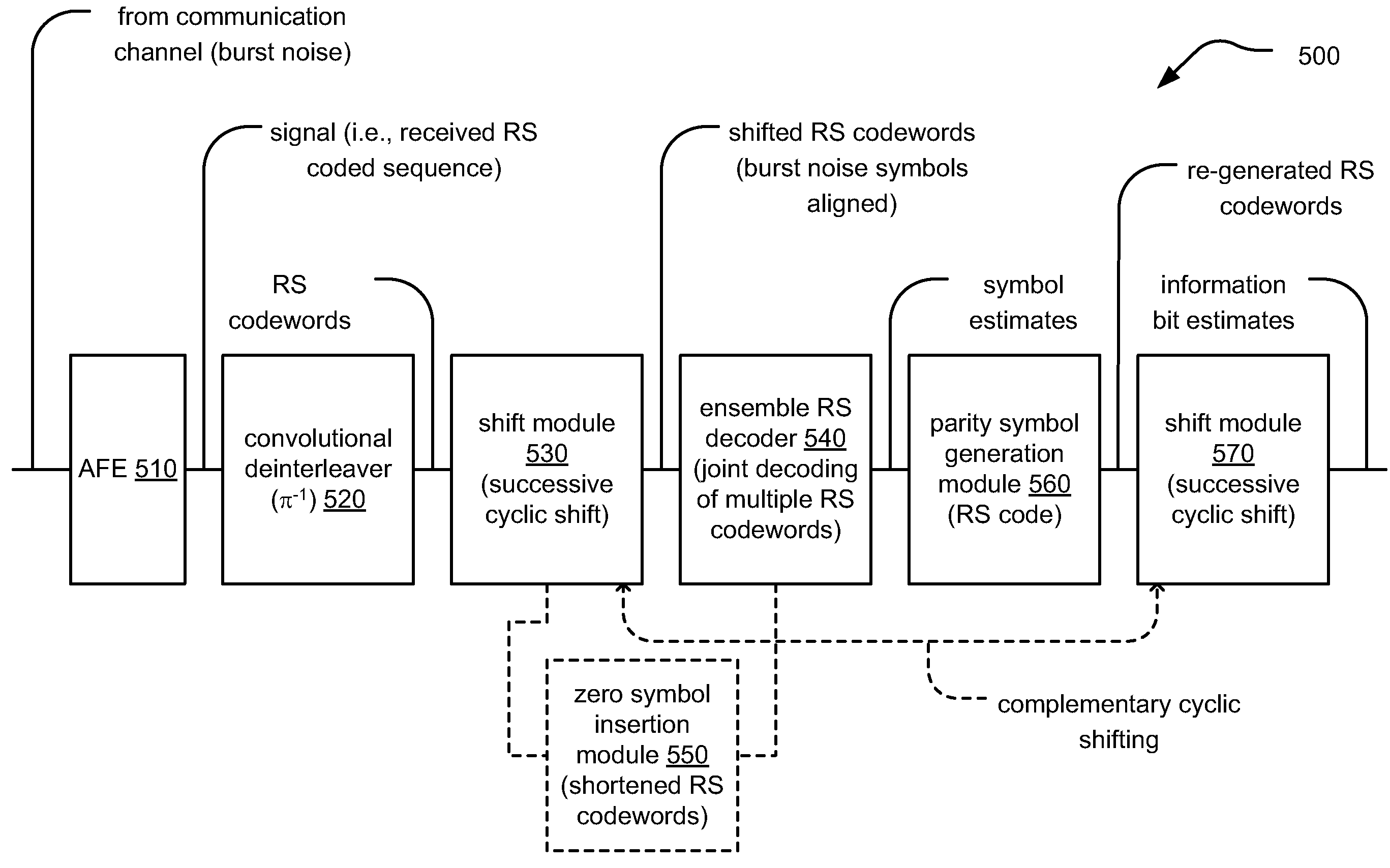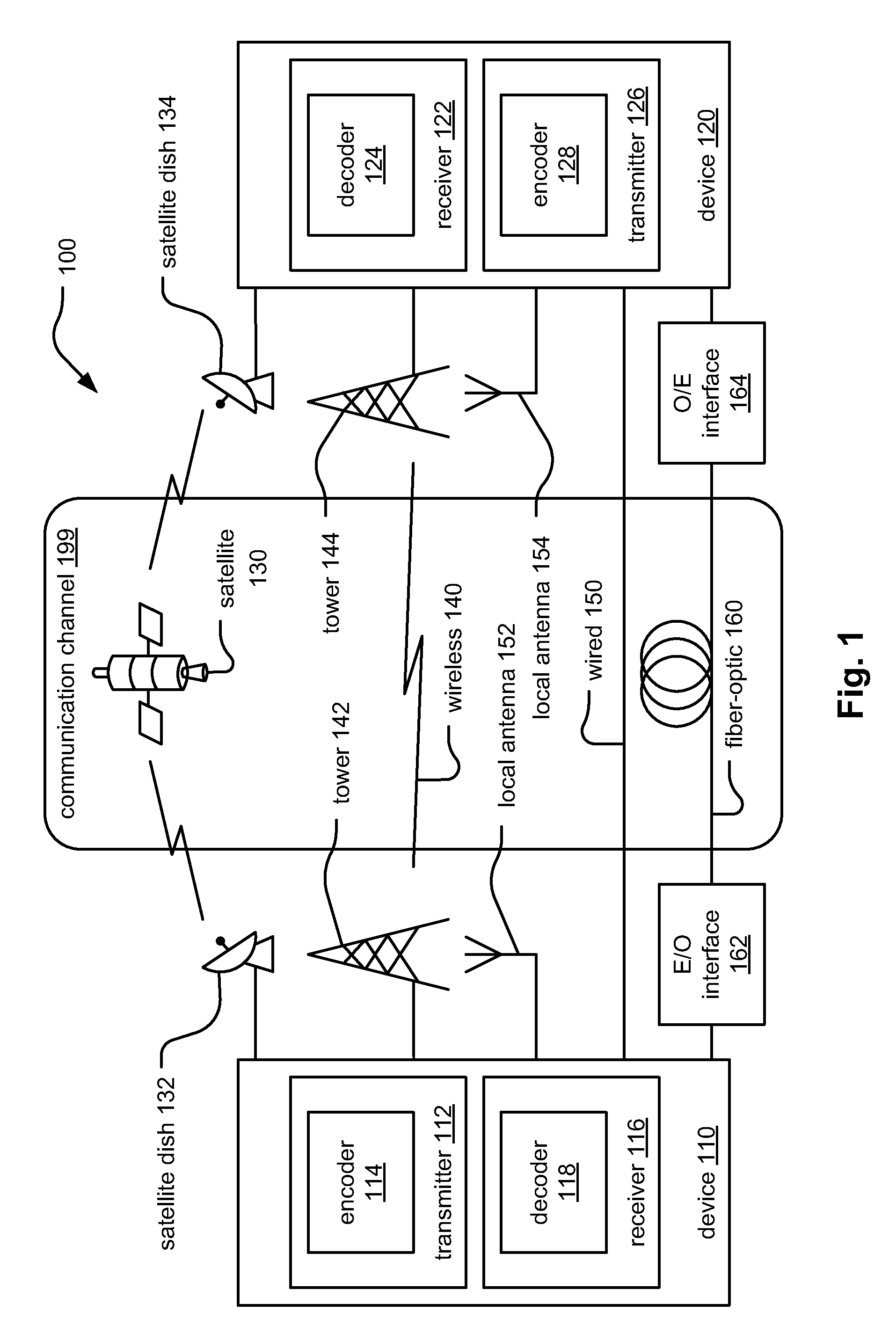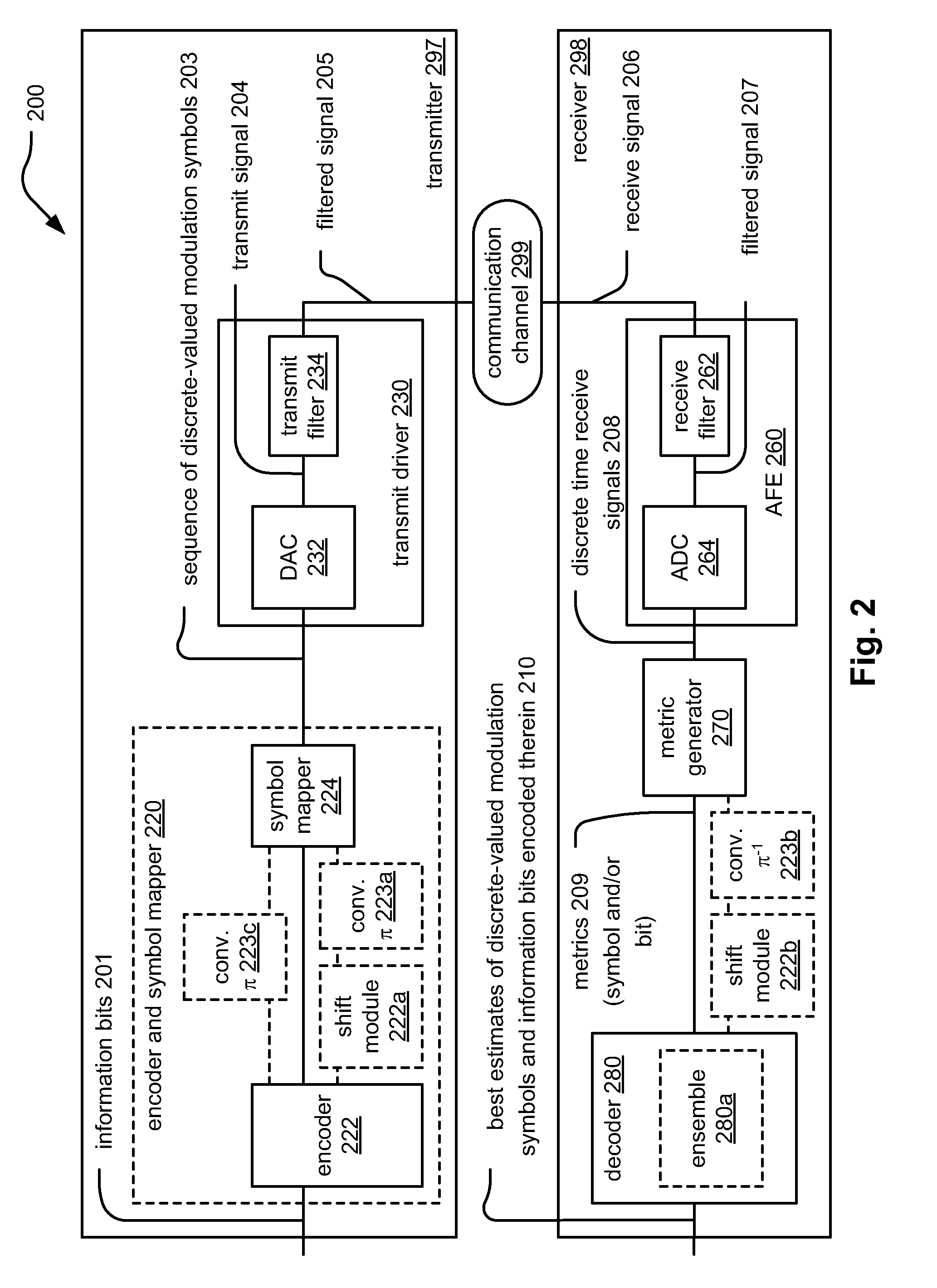Handling burst error events with interleaved Reed-Solomon (RS) codes
a burst error and code technology, applied in the field of communication systems, can solve problems such as communication channels that may suffer from other than awgn deficiencies
- Summary
- Abstract
- Description
- Claims
- Application Information
AI Technical Summary
Problems solved by technology
Method used
Image
Examples
embodiment 1300
[0101]FIG. 13 illustrates an embodiment 1300 of convolutional interleaving and deinterleaving. As can be seen, symbols are input to the convolutional interleaver (π) 1310 on the left hand side of the diagram. A first symbol is passed directly out to a communication channel 1399, a second symbol undergoes a delay of a value of Y and is then passed to the communication channel 1399. This processing continues so that each successive symbol is delayed by increasing amounts of time.
[0102]Analogously, at the other end of the communication channel 1399 is a convolutional deinterleaver (π−1) 1310 on the right hand side of the diagram and performs the complementary processing of the convolutional interleaver (π) 1310.
[0103]In accordance with convolutional interleaving and convolutional deinterleaving, a burst noise event within the communication channel 1399 will affect symbols of various codewords. By performing the appropriate shifting within a transmitter communication device and / or a rec...
embodiment 1600
[0108]Referring to the embodiment 1600 in FIG. 16, as can be seen in this diagram, p+m+3 (where p and m are integers, and where p=q×m+1) consecutive symbols are affected in a burst noise event, and those symbols are spread across multiple codewords as can be seen when the codewords are output from a convolutional deinterleaver (π−1). A first burst noise affected symbol is shown as being in codeword m, a second burst noise affected symbol is shown as being in codeword m−1, a third burst noise affected symbol is shown as being in codeword m−2, and so on. Because the convolutional deinterleaver (π) / interleaver (π−1) is an m element device, an m-th burst noise affected symbol is shown as being in codeword 1, and then the burst noise affected symbols wrap around again to codeword m (that also includes an m+1-th burst noise affected symbol). An m+2-th burst noise affected symbol is included in codeword m−1.
embodiment 1700
[0109]Referring to the embodiment 1700 in FIG. 17, as can be seen in this diagram, only m+2 (where m is an integer) consecutive symbols are affected in a burst noise event, and those symbols are spread across multiple codewords as can be seen when the codewords are output from a convolutional deinterleaver (π−1). A first burst noise affected symbol is shown as being in codeword m, a second burst noise affected symbol is shown as being in codeword m−1, a third burst noise affected symbol is shown as being in codeword m−2, and so on. As with the previous embodiment, because the convolutional deinterleaver (π) / interleaver (π−1) is an m element device, an m-th burst noise affected symbol is shown as being in codeword 1, and then the burst noise affected symbols wrap around again to codeword m (that also includes an m+1-th burst noise affected symbol). An m+2 burst noise affected symbol is included in codeword m−1. No additional symbols are included within the burst noise event that affe...
PUM
 Login to View More
Login to View More Abstract
Description
Claims
Application Information
 Login to View More
Login to View More - R&D
- Intellectual Property
- Life Sciences
- Materials
- Tech Scout
- Unparalleled Data Quality
- Higher Quality Content
- 60% Fewer Hallucinations
Browse by: Latest US Patents, China's latest patents, Technical Efficacy Thesaurus, Application Domain, Technology Topic, Popular Technical Reports.
© 2025 PatSnap. All rights reserved.Legal|Privacy policy|Modern Slavery Act Transparency Statement|Sitemap|About US| Contact US: help@patsnap.com



